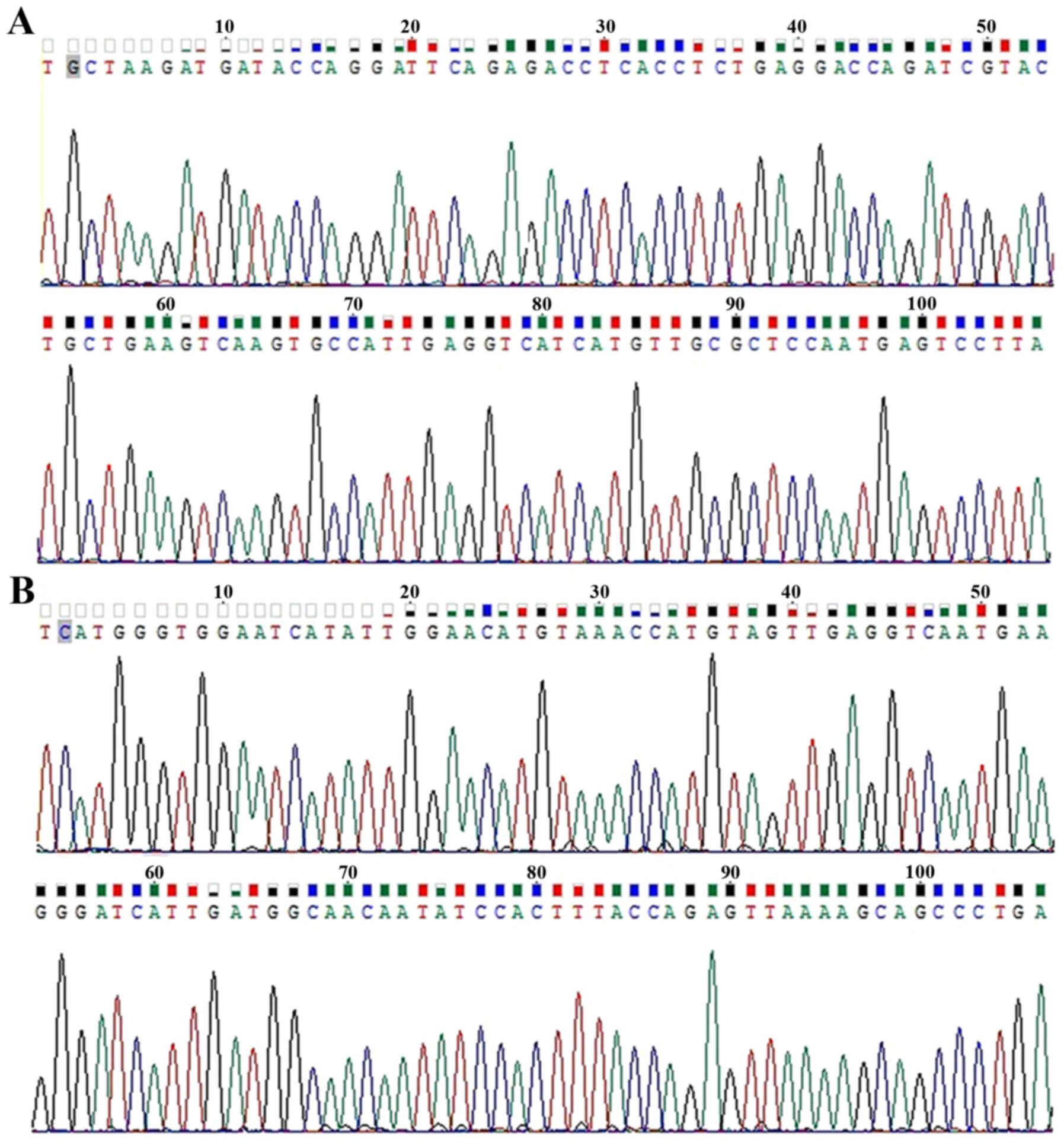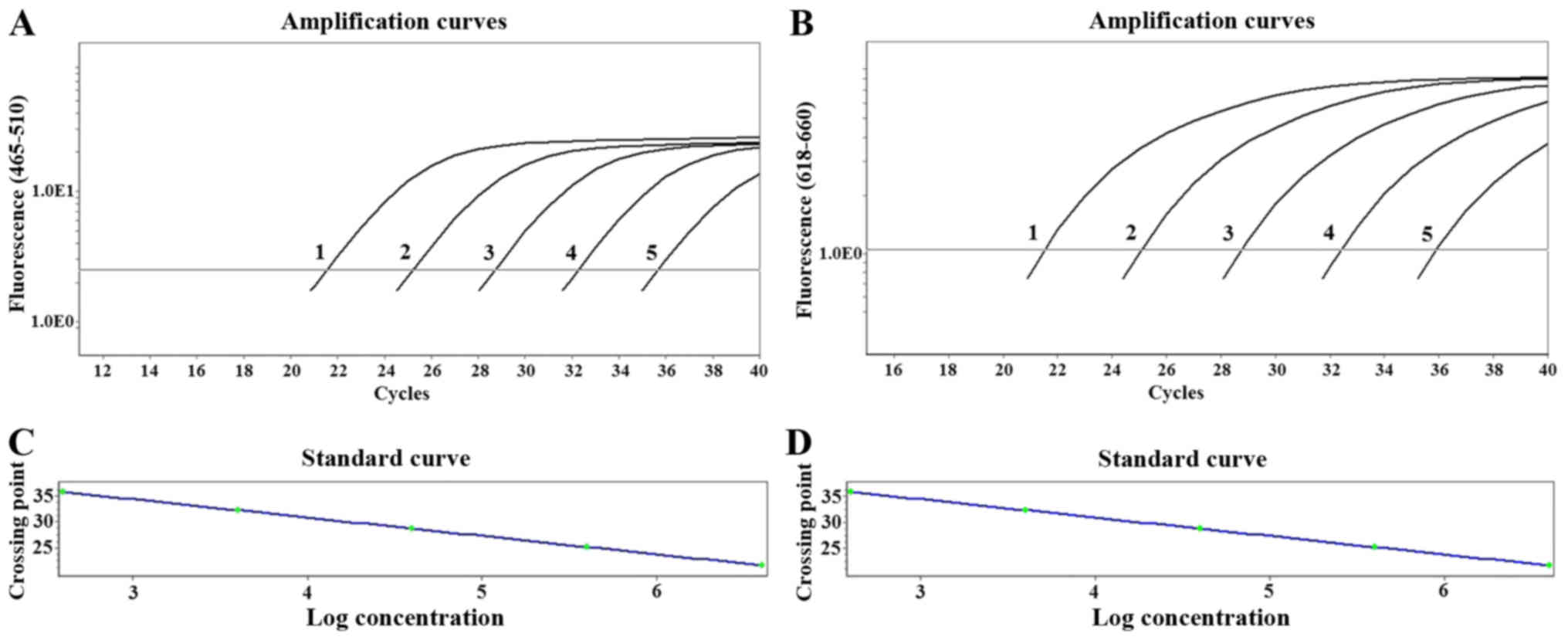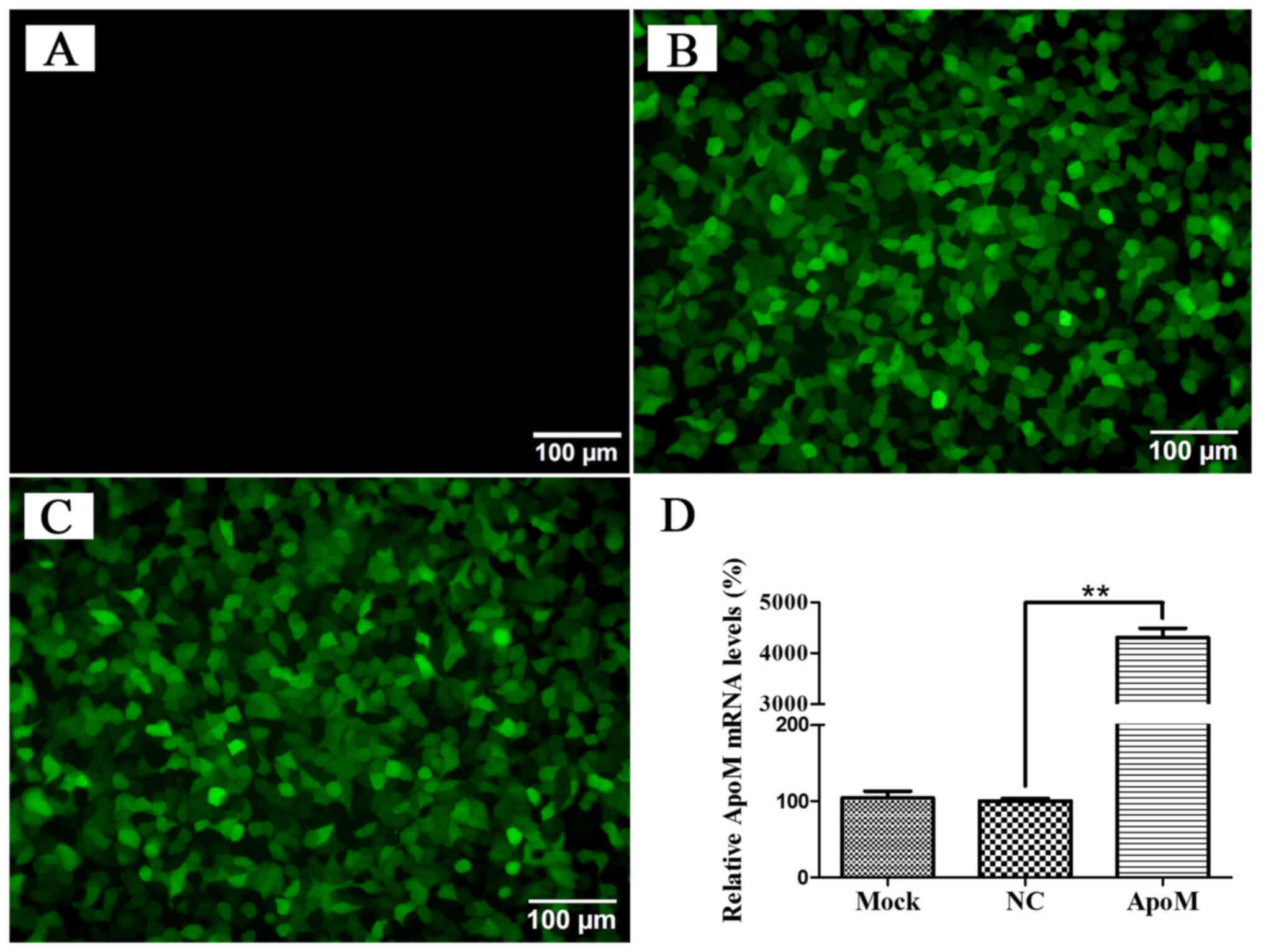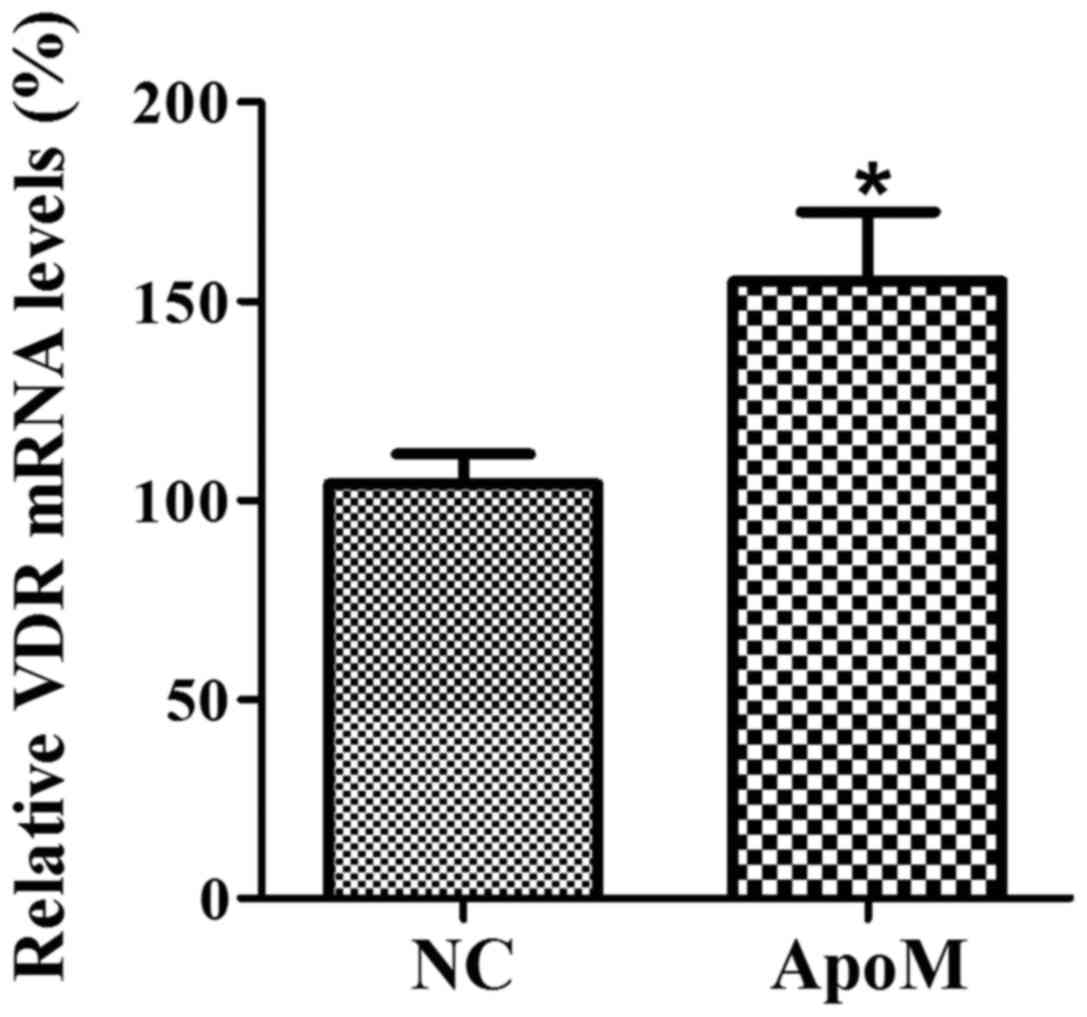|
1
|
Xu N and Dahlbäck B: A novel human
apolipoprotein (apoM). J Biol Chem. 274:31286–31290. 1999.
View Article : Google Scholar : PubMed/NCBI
|
|
2
|
Wolfrum C, Poy MN and Stoffel M:
Apolipoprotein M is required for prebeta-HDL formation and
cholesterol efflux to HDL and protects against atherosclerosis. Nat
Med. 11:418–422. 2005. View
Article : Google Scholar : PubMed/NCBI
|
|
3
|
Huang XS, Zhao SP, Hu M and Luo YP:
Apolipoprotein M likely extends its anti-atherogenesis via
anti-inflammation. Med Hypotheses. 69:136–140. 2007. View Article : Google Scholar : PubMed/NCBI
|
|
4
|
Arkensteijn BW, Berbée JF, Rensen PC,
Nielsen LB and Christoffersen C: The apolipoprotein
m-sphingosine-1-phosphate axis: Biological relevance in lipoprotein
metabolism, lipid disorders and atherosclerosis. Int J Mol Sci.
14:4419–4431. 2013. View Article : Google Scholar : PubMed/NCBI
|
|
5
|
Luo G, Zhang X, Mu Q, Chen L, Zheng L, Wei
J, Berggren-Söderlund M, Nilsson-Ehle P and Xu N: Expression and
localization of apolipoprotein M in human colorectal tissues.
Lipids Health Dis. 9:1022010. View Article : Google Scholar : PubMed/NCBI
|
|
6
|
Gonzalez-Parra E, Rojas-Rivera J, Tuñón J,
Praga M, Ortiz A and Egido J: Vitamin D receptor activation and
cardiovascular disease. Nephrol Dial Transplant. 27 Suppl
4:iv17–21. 2012. View Article : Google Scholar : PubMed/NCBI
|
|
7
|
Christakos S, Dhawan P, Verstuyf A,
Verlinden L and Carmeliet G: Vitamin D: Metabolism, molecular
mechanism of action, and pleiotropic effects. Physiol Rev.
96:365–408. 2016. View Article : Google Scholar : PubMed/NCBI
|
|
8
|
Li S, He Y, Lin S, Hao L, Ye Y, Lv L, Sun
Z, Fan H, Shi Z, Li J, et al: Increase of circulating cholesterol
in vitamin D deficiency is linked to reduced vitamin D receptor
activity via the Insig-2/SREBP-2 pathway. Mol Nutr Food Res.
60:798–809. 2016. View Article : Google Scholar : PubMed/NCBI
|
|
9
|
Dou R, Ng K, Giovannucci EL, Manson JE,
Qian ZR and Ogino S: Vitamin D and colorectal cancer: Molecular,
epidemiological and clinical evidence. Br J Nutr. 115:1643–1660.
2016. View Article : Google Scholar : PubMed/NCBI
|
|
10
|
Feldman D, Krishnan AV, Swami S,
Giovannucci E and Feldman BJ: The role of vitamin D in reducing
cancer risk and progression. Nat Rev Cancer. 14:342–357. 2014.
View Article : Google Scholar : PubMed/NCBI
|
|
11
|
Nurmi J, Ylikoski A, Soukka T, Karp M and
Lövgren T: A new label technology for the detection of specific
polymerase chain reaction products in a closed tube. Nucleic Acids
Res. 28:E282000. View Article : Google Scholar : PubMed/NCBI
|
|
12
|
Angelone-Alasaad S, Min A Molinar,
Pasquetti M, Alagaili AN, D'Amelio S, Berrilli F, Obanda V, Gebely
MA, Soriguer RC and Rossi L: Universal conventional and real-time
PCR diagnosis tools for Sarcoptes scabiei. Parasit Vectors.
8:5872015. View Article : Google Scholar : PubMed/NCBI
|
|
13
|
Parker J, Fowler N, Walmsley ML, Schmidt
T, Scharrer J, Kowaleski J, Grimes T, Hoyos S and Chen J:
Analytical Sensitivity Comparison between Singleplex Real-Time PCR
and a Multiplex PCR Platform for Detecting Respiratory Viruses.
PLoS One. 10:e01431642015. View Article : Google Scholar : PubMed/NCBI
|
|
14
|
Shen Z: Effect of reaction tube on the
accuracy of polymerase chain reaction. J Prac Medi Tech.
17:142–143. 2010.
|
|
15
|
Gubelmann C, Gattiker A, Massouras A, Hens
K, David F, Decouttere F, Rougemont J and Deplancke B: GETPrime: A
gene- or transcript-specific primer database for quantitative
real-time PCR. Database (Oxford). 2011:bar0402011. View Article : Google Scholar : PubMed/NCBI
|
|
16
|
Wang X, Spandidos A, Wang H and Seed B:
PrimerBank: A PCR primer database for quantitative gene expression
analysis, 2012 update. Nucleic Acids Res. 40(Database issue):
D1144–D1149. 2012. View Article : Google Scholar : PubMed/NCBI
|
|
17
|
Huang LZ, Gao JL, Pu C, Zhang PH, Wang LZ,
Feng G and Zhang Y: Apolipoprotein M: Research progress, regulation
and metabolic functions (Review). Mol Med Rep. 12:1617–1624.
2015.PubMed/NCBI
|
|
18
|
Elsøe S, Christoffersen C, Luchoomun J,
Turner S and Nielsen LB: Apolipoprotein M promotes mobilization of
cellular cholesterol in vivo. Biochim Biophys Acta. 1831:1287–1292.
2013. View Article : Google Scholar : PubMed/NCBI
|
|
19
|
Luo G, Zhang X, Nilsson-Ehle P and Xu N:
Apolipoprotein M. Lipids Health Dis. 3:212004. View Article : Google Scholar : PubMed/NCBI
|
|
20
|
Matusiak D, Murillo G, Carroll RE, Mehta
RG and Benya RV: Expression of vitamin D receptor and
25-hydroxyvitamin D3-1{alpha}-hydroxylase in normal and malignant
human colon. Cancer Epidemiol Biomarkers Prev. 14:2370–2376. 2005.
View Article : Google Scholar : PubMed/NCBI
|
|
21
|
Milczarek M, Filip-Psurska B, Swiętnicki
W, Kutner A and Wietrzyk J: Vitamin D analogs combined with
5-fluorouracil in human HT-29 colon cancer treatment. Oncol Rep.
32:491–504. 2014.PubMed/NCBI
|
|
22
|
Elimrani I, Koenekoop J, Dionne S, Marcil
V, Delvin E, Levy E and Seidman EG: Vitamin D Reduces Colitis- and
Inflammation-Associated Colorectal Cancer in Mice Independent of
NOD2. Nutr Cancer. 69:276–288. 2017. View Article : Google Scholar : PubMed/NCBI
|
|
23
|
Vidigal VM, Silva TD, de Oliveira J,
Pimenta CAM, Felipe AV and Forones NM: Genetic polymorphisms of
vitamin D receptor (VDR), CYP27B1 and CYP24A1 genes and the risk of
colorectal cancer. Int J Biol Markers. 32:e224–e230. 2017.
View Article : Google Scholar : PubMed/NCBI
|
|
24
|
Takada I and Makishima M: Control of
inflammatory bowel disease and colorectal cancer by synthetic
vitamin D receptor ligands. Curr Med Chem. Dec 2–2016.(Epub ahead
of print).
|
|
25
|
Yazdani S, Poosti F, Toro L, Wedel J,
Mencke R, Mirković K, de Borst MH, Alexander JS, Navis G, van Goor
H, et al: Vitamin D inhibits lymphangiogenesis through
VDR-dependent mechanisms. Sci Rep. 7:444032017. View Article : Google Scholar : PubMed/NCBI
|
|
26
|
Chiang KC, Yeh TS, Huang CC, Chang YC,
Juang HH, Cheng CT, Pang JS, Hsu JT, Takano M, Chen TC, et al:
MART-10 represses cholangiocarcinoma cell growth and high vitamin D
receptor expression indicates better prognosis for
cholangiocarcinoma. Sci Rep. 7:437732017. View Article : Google Scholar : PubMed/NCBI
|
|
27
|
Tavera-Mendoza LE, Westerling T, Libby E,
Marusyk A, Cato L, Cassani R, Cameron LA, Ficarro SB, Marto JA,
Klawitter J and Brown M: Vitamin D receptor regulates autophagy in
the normal mammary gland and in luminal breast cancer cells. Proc
Natl Acad Sci USA. 114:E2186–E2194. 2017. View Article : Google Scholar : PubMed/NCBI
|













